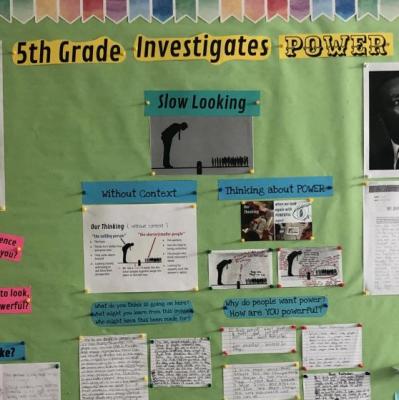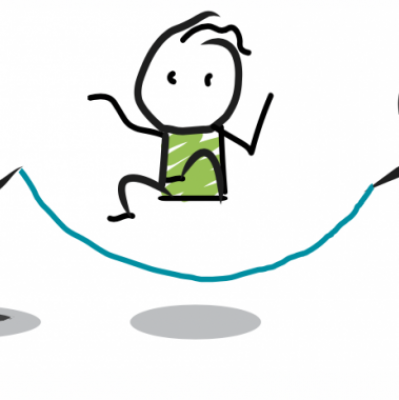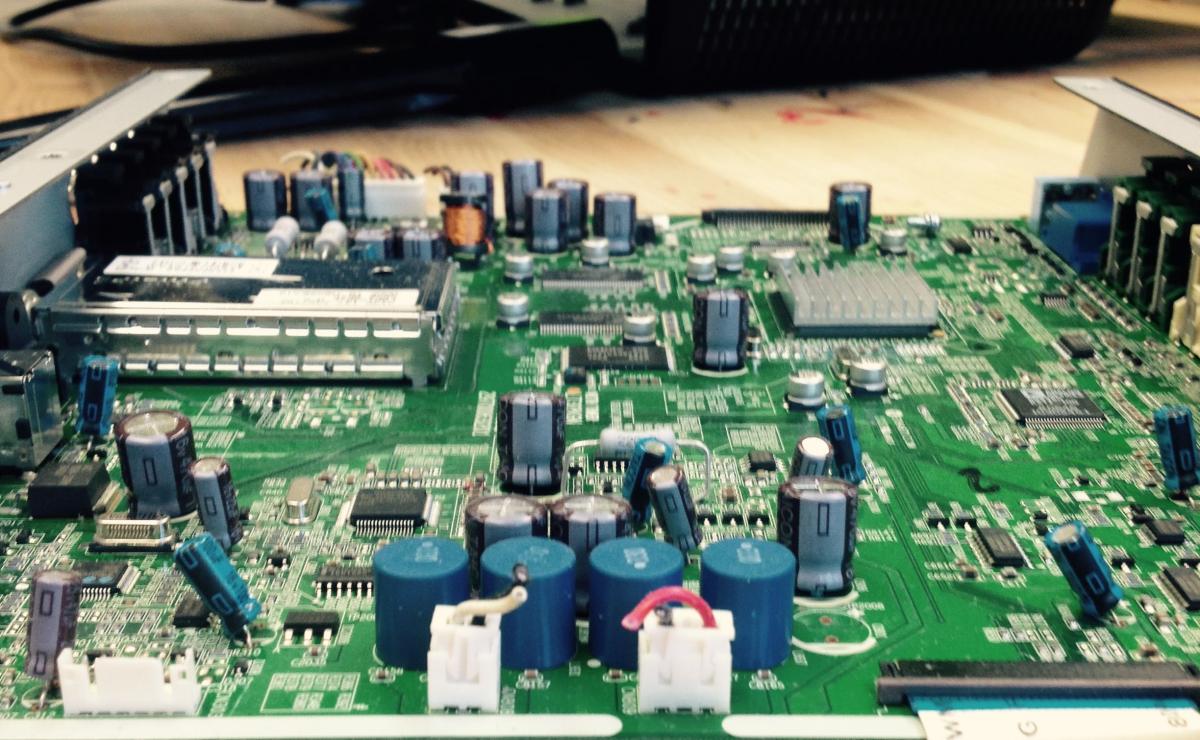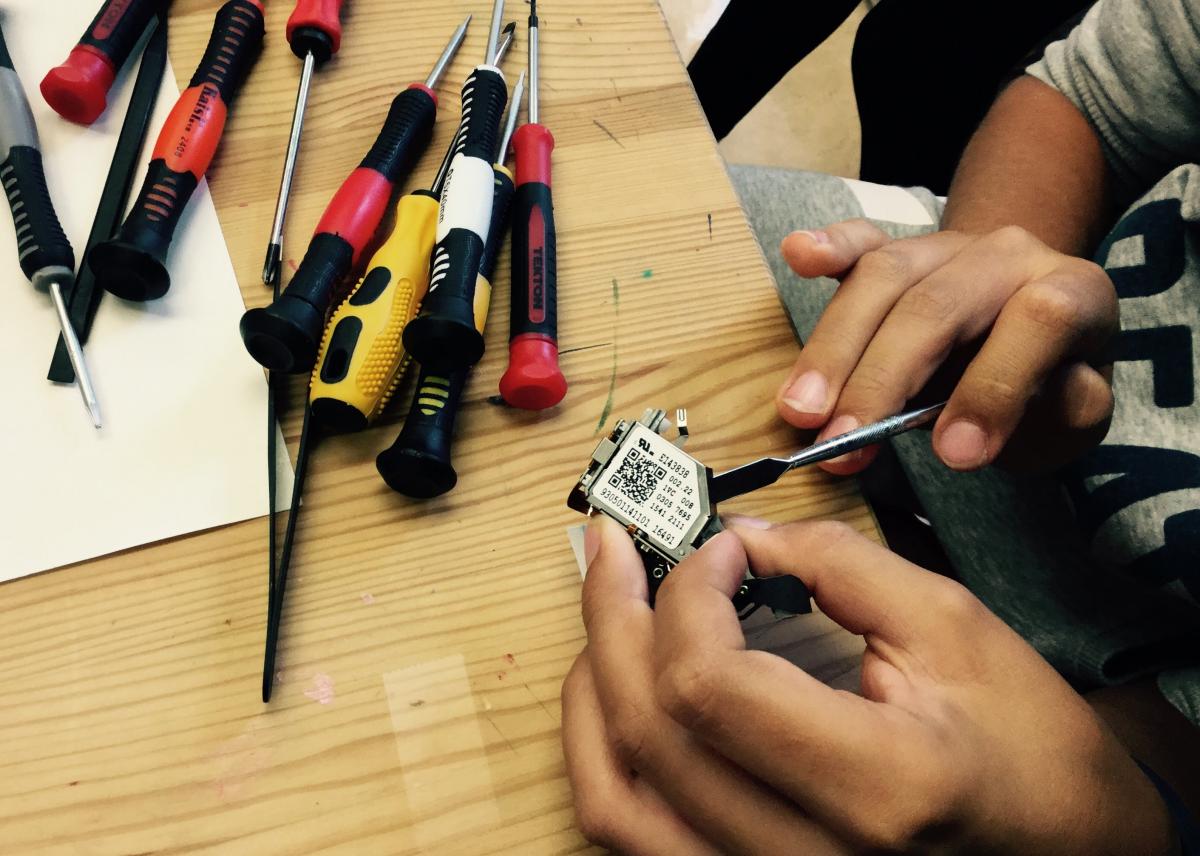
Maker Empowerment: A Concept Under Construction
Agency by Designer project Director Shari Tishman introduces the concept of “maker empowerment” as a potential outcome of maker learning experiences.
Over the last 18 months, the Agency by Design team has visited several school-based maker spaces and maker programs, talked with many educators involved in maker-inspired teaching and learning, and read numerous articles and books about the maker movement and maker-based education. As part of our effort to distill common themes, lately we’ve been talking about a concept we’re calling maker empowerment. We arrived at this idea by distilling what we’ve learned, by applying a “maker” lens to the concept of agency, and by trying to articulate our best hope for what young people might gain through maker-centered educational experiences—recognizing that maker-centered learning can take many different forms and yield many different products and activities. Here’s our working definition—what it may lack in poetry, we hope it makes up in precision.
Maker Empowerment: A heightened sensitivity to the made dimension of objects, ideas, and systems, along with a nudge toward tinkering with them and an increased capacity to do so.
If you look at this definition from a design perspective you’ll see that it cobbles together three distinct ideas. The first phrase, A heightened sensitivity to the made dimension of objects, ideas, and systems, points to the importance of simply noticing that many of the objects, ideas, and systems we encounter in the world—from desktops to democracy to driver education classes—are human-made designs. They are comprised of specific parts that fit together to serve a purpose (or multiple purposes), and they can be understood and analyzed from the standpoint of design.
The second part of the sentence talks about a nudge toward tinkering and pushes the idea of sensitivity into action. It suggests that to be maker empowered, you not only notice the designed dimension of the world, but also feel impelled, at least from time to time, to fiddle around with making or remaking things yourself. The range of activity encompassed by this nudge toward action is quite broad. It includes constant tinkerers and inventors, weekend DIYers, and the kindergartener who notices that lining up in single file to go out to the school playground is a certain kind of system and tries to envision an alternative approach. The word “nudge” is meant to capture the sense of agency that is comingled with the inclination to hack, tweak, reinvent, or create.
The third part of our working definition of maker empowerment mentions increased capacity. This points to the obvious fact that designing and making things require certain skills, but the definition uses the word capacity rather than skill intentionally. Capacities can consist of knowing how to use certain tools and procedures, but they can also consist of knowing how to find out how to use those tools and materials. This finding out might come about through formal instruction; for example, you might follow a teacher’s instructions on how to use a drill press or take a course in soft electronics. But you might also find what you need to know through more informal means, such as searching around online, watching others, or just giving a tool a try and learning through doing. This point about multiple modes of learning is important: The maker movement celebrates thinking with your hands, and learning what you need from wherever and whomever as you go along. From an educational standpoint, helping young people develop the capacity to engage with the world as makers means creating environments in which skills can emerge naturally in the process of making—a process which often occurs in the company of others. So the capacities that give rise to a sense of maker empowerment include skills related to learning-to-learn and collaboration as much as they include technical skills.
Bumping back up to the big picture, here again is our working definition: Maker empowerment is a heightened sensitivity to the made dimension of objects, ideas, and systems, along with a nudge toward tinkering with them and an increased capacity to do so. We suggest that helping young people develop a sense of maker empowerment is a worthy goal of maker-centered education in all its varieties, and that achieving this goal means attending to all three elements captured in the foregoing definition—developing a sensitivity to design, a sense of agency with regard to making, and capacities that support self-directed, community-resourced learning.
As the title of this blog post indicates, maker empowerment is a concept under construction. As we continue to develop this idea, we’d love to know what you think!








 For that matter, so are the guts of a blender or a blow dryer or an FM radio. When I first started using
For that matter, so are the guts of a blender or a blow dryer or an FM radio. When I first started using  A first, essential step is looking closely—slowly observing and reflecting on the whole. One of the key requirements of a Take Apart, and one that I share with learners, is this important permission: You will not be asked to put it back together. You do not need to preserve it. Once the clock is really Taken Apart, it does not go back together, literally or conceptually. It is a plastic rain poncho that can never be stuffed back into its perfect tiny pouch. When we unpack the parts and complications of the clock—when we explore complexity—our understanding of it balloons out dimensionally.
A first, essential step is looking closely—slowly observing and reflecting on the whole. One of the key requirements of a Take Apart, and one that I share with learners, is this important permission: You will not be asked to put it back together. You do not need to preserve it. Once the clock is really Taken Apart, it does not go back together, literally or conceptually. It is a plastic rain poncho that can never be stuffed back into its perfect tiny pouch. When we unpack the parts and complications of the clock—when we explore complexity—our understanding of it balloons out dimensionally. 
